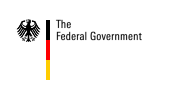Despite the high population density, Germany has a wealth of natural beauty.
Little wonder: With two seas in the North, lake and river landscapes, low and high mountain ranges, a large number of country parks and nature reserves, the country presents the visitor with some particularly diverse natural features. Agricultural landscapes such as the fertile valleys of the Rhine and Mosel, the extensive fens at the North Sea coast, and the foothills of the Alps with their mountains and lakes, have also influenced the culture of the regions with their traditions and customs, which often date back centuries.
A wide choice of leisure activities
All over the country visitors can benefit from a wide range of enjoyable leisure and sporting activities. Well-appointed hiking and cycle tracks, ski runs and cross-country ski runs in the high and low mountain ranges, as well as an excellent offer of water sports facilities, invite the visitor to spend their leisure time in a very active way. The many Spa establishments that can be found throughout the country promise relaxation and a chance for stressed holidaymakers to unwind completely.
There is exciting entertainment for sports fans, too. Competitions in all types of sport can be seen, live, at the large number of venues. In Germany, football is naturally in the forefront here. On average, ten million spectators attend Bundesliga games every season.
Germany’s cities – attractive, but not only to fans of culture
Anyone wanting to experience art and culture will be well provided for in Germany. The numerous castles and stately homes, churches and monasteries, and the historic city parks, many of which are very well preserved, attract tourists ‘like bees round a honey pot’.
However, cities like the ‘Magic Cities’, which include Frankfurt, Dresden, Hamburg, Cologne and Munich, are also popular destinations. In addition to many sights and important cultural institutions, these metropolises offer a wide range of interesting and up-to-the-minute events.
Berlin is a particular focal point for visitors from Germany and beyond. Like no other city this metropolis, divided until 1989, constitutes a symbol of German unity. As such, Germany’s capital city is now proving to be more lively and exciting than ever: Architecture old and new, culture from centuries past and avant-garde art, a vibrant art and theatre scene, international trade fairs and musical events – Berlin really does have something to suit all tastes.
UNESCO has awarded thirty places of cultural interest the status of world cultural heritage site
But in many smaller towns, as well, what is on offer in terms of culture is truly astonishing. This is because of the history of the country, which developed out of a vast number of small states. This is why, today, it is not just Berlin’s Museumsinsel and Cologne Cathedral that are counted among Germany’s thirty UNESCO world heritage sites; the old towns of Stralsund and Bamberg, and Classical Weimar, have also earned this designation. The many folk festivals and processions that are held throughout Germany constitute very significant attractions, bringing in more and more visitors every year. And by this we do not just mean the Munich Octoberfest, the Christkindlmarkt in Nuremberg or the Rhine Carnival. There are also the Alemannic pre-Lent celebrations in Rottweil. They attract tens of thousands of visitors to the Black Forest annually in the days running up to Ash Wednesday, and can trace their origins back to the 15th century.
In the far North of the country at the Rostock Hanse Sail, held on the second weekend in August every year, around 200 sailors with their tall ships and historic craft gather together with more than a million spectators. This makes the Rostock Hanse Sail the largest maritime event to be held in the coastal Land of Mecklenburg-Western Pomerania.
A highly developed transport infrastructure
With more than 82 million inhabitants, living in an area covering 350,000 square kilometres, Germany is one of the most densely populated countries in Europe. The transport infrastructure is thus comprehensive and well developed. From Hamburg right down to Munich and from Cologne as far as Berlin – all points are accessible easily and quickly by car, rail, coach or plane.
The ever growing Intercity rail network, the extensive motorway network and the modern aviation network ensure smooth-running travel and the latest safety standards.
Beyond the far-reaching branches of the transport system almost a hundred tourist roads, such as the ‘Romantic Road’ or the ‘German Wine Road’, give visitors access to the ancient rural parts of the country, enabling them to get close to the beauties of nature and some idyllic old towns and villages.
Hospitality is the number one priority
Visitors to Germany can find accommodation from every category: From the private room through guesthouses and holiday apartments to the luxury standard hotel. Even accommodation in the lower-price classes has to meet certain standards, with compliance being monitored, and so, at all events, a minimum degree of comfort can be expected.
It has long been known that Germany has more dishes to offer than simply ‘Bratwurst’ and ‘Sauerkraut’. Even if regional cuisine is greatly appreciated, in country area, too, international dishes will be on the menu. And it is not only in cities that connoisseurs can find their favourite fare: excellent restaurants can be found right across the country.
